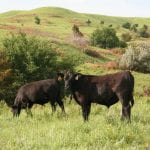Justin Waggoner, Ph.D., Beef Systems Specialist
Good customer service is essential to any business or organization, having staff members who leave customers or anyone that encounters your business with that “wow that was great” feeling directly influences the bottom line. Customer service has become more important than ever as more consumers are purchasing goods without ever crossing the threshold of a traditional storefront. So how do we generate those feelings with someone on the phone or in a chat box? Let us start with the basics. What is customer service? Customer service is simply defined as the assistance provided by a company to those who purchase the goods or services it provides. Now on to the tough part, how do we as business or organization provide that assistance?
Susan Ward (www.thebalancesmb.com) offers a few simple things that businesses can do to improve their customer service experiences. First, answer the phone. Potential customers want to talk to a person and don’t want to leave a message. Second, don’t make promises you can’t keep. As the old saying goes “say what you are going to do and do what you said you were going to.” Third, listen. Simply listening to what a potential customer needs is important, there is nothing worse than listening to sales pitch for something you don’t want. Fourth, be helpful even if you don’t make the sale today. The service provided today has the potential to turn in to something much larger in the future. Fifth, train your staff to go the extra mile, by providing additional information about the product or other items commonly purchased with said goods. Lastly, empower your staff to offer something extra without asking permission, especially in those circumstances where the “customer is always right.”
For more information, contact Justin Waggoner at jwaggon@ksu.edu.


